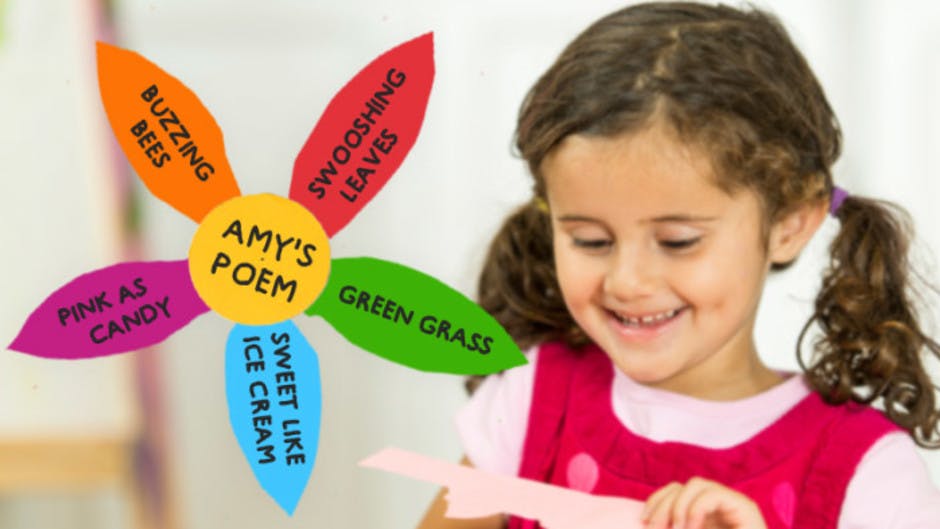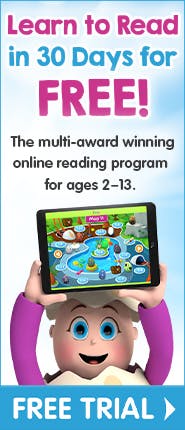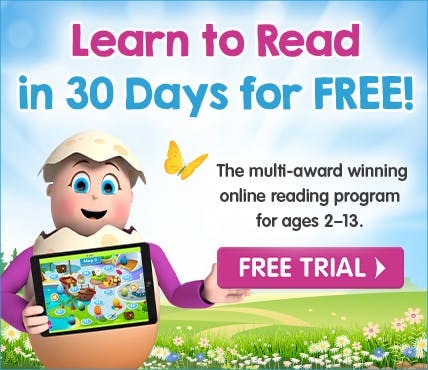


3 Fun Poetry Crafts Your Toddler Will Love

Exploring poetry is a wonderful way to get toddlers involved in reading! Discover over 4,000 e‑books to choose from, hundreds of self‑paced one‑on‑one lessons, exciting activities and more in Reading Eggs! Free trial
Poetry is a wonderful way to get young children enthusiastic about books and reading. Not only is it fun to read, it's also a great way to boost essential literacy skills, such as phonemic awareness and fluency, while building your child's vocabulary.
Here are three fun poetry craft ideas to help build your toddler's literacy skills and creativity, while fuelling their interest in reading and poetry.
Fun poetry crafts for toddlers
1. Make a 'Poetree'
This is a lovely craft idea to celebrate poetry in your home.
Type up short poems on a computer or typewriter (choose poems that your family loves or collect ones that your child has written) and print them onto white sheets of paper.
Prepare your 'Poetree' by using small tree limbs tied together with twine and secured in a sand-filled pot, or use an actual tree in your backyard. You could even help your child cut out tree limbs using a large sheet of construction paper, and hang it on a wall.
To make the leaves, gather blank stationery cards, glue, safety scissors, a hole‑punch and ribbon.
Help your child to cut out each poem and glue it onto a stationery card. Then help them to draw and decorate a leaf on the back of each card using pencils, crayons, paints or scrapbook paper.
Punch a hole at the top of each card and secure the poems onto the branches using pieces of ribbon. Over time, your child can continue reading and adding new poetry leaves onto their tree.
2. Make a shape poem
Shape poems are a fun and creative way to help your toddler write their first poems. These poems describe a particular object, and are written in the shape of that object (e.g. a poem about the moon may be shaped as a crescent or a circle).
To create a shape poem, you need to prepare a pen or pencil, safety scissors, markers or crayons (for decorating), and some construction paper or card stock.
To begin the poem, help your child think of a shape. Some good options include a heart, a football, a rainbow, a caterpillar, a star, a raindrop, or a kite or balloon with string. Good suggestions for beginners could also include animals, types of food or musical instruments.
Next, encourage your child think of five to ten ways to describe their shape using words, phrases, or things that remind them of the shape. Outline the shape on a piece of construction paper or card stock and begin writing those words into the shape. Then help your child cut around the shape and decorate it.
3. Poem Petals
This is a great activity which is ideal for beginners, and helps young children to build early writing skills. All you need for this activity is an assortment of pencils or paints and a white sheet of paper. Help your child draw a flower (fill up the entire space of your page), and include five large petals, large enough to write two to three words into.
Help your child brainstorm words or phrases which describe flowers, springtime, gardens or nature. You can even sit outside with a notebook and pencil and scribble down things you see for inspiration. Experiment with a range of literary devices, such as alliteration (e.g. red roses, green grass, purple pansies), similes (e.g. hot like the sun, sweet like ice cream, pink as candy), and sound words, or onomatopoeias (e.g. buzzing bees, gurgling water, swooshing leaves, chirping birds).
Once you’re finished, help your child write the descriptive words or phrases into each petal and then decorate their flower.
Discover more fun poetry activities to try with your toddler.
Introduce your toddler to poetry with Reading Eggs!
Designed for ages 2–13, Reading Eggs has over 4,000 e‑books to choose from in a wide range of genres including poetry, fiction and non‑fiction. Your toddler can take part in hundreds of self‑paced one‑on‑one lessons and exciting activities that grow with them, learning essential literacy skills they'll keep for life!






